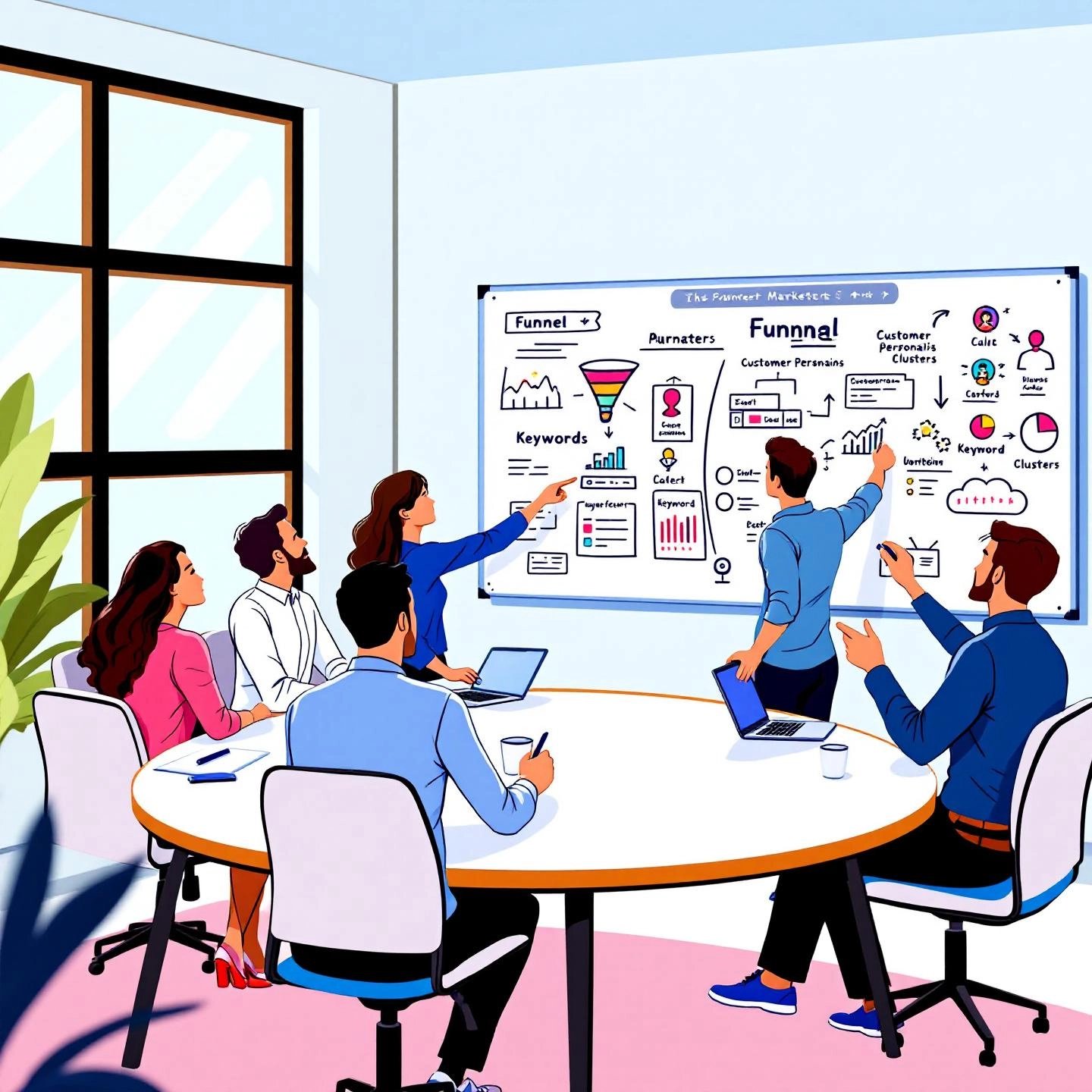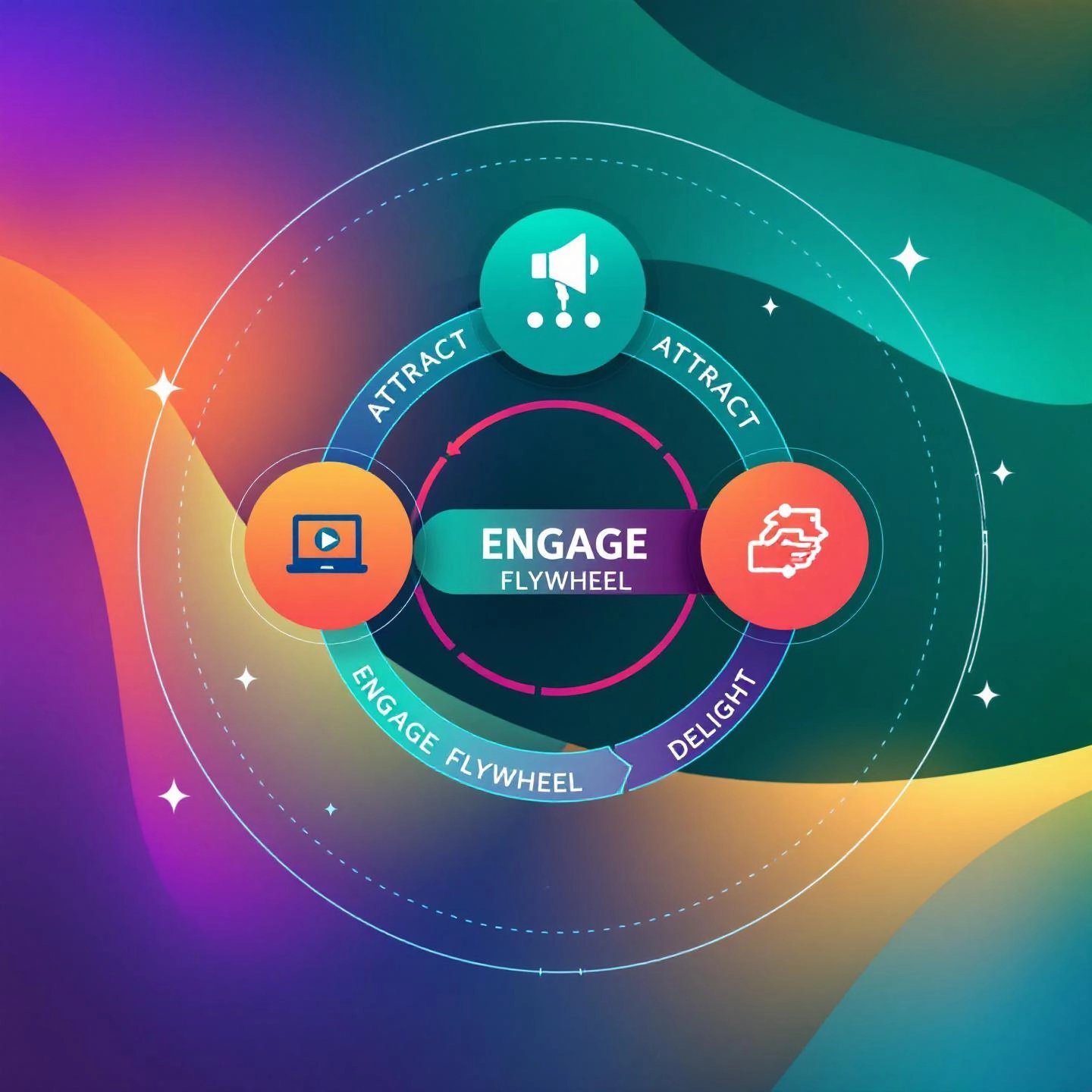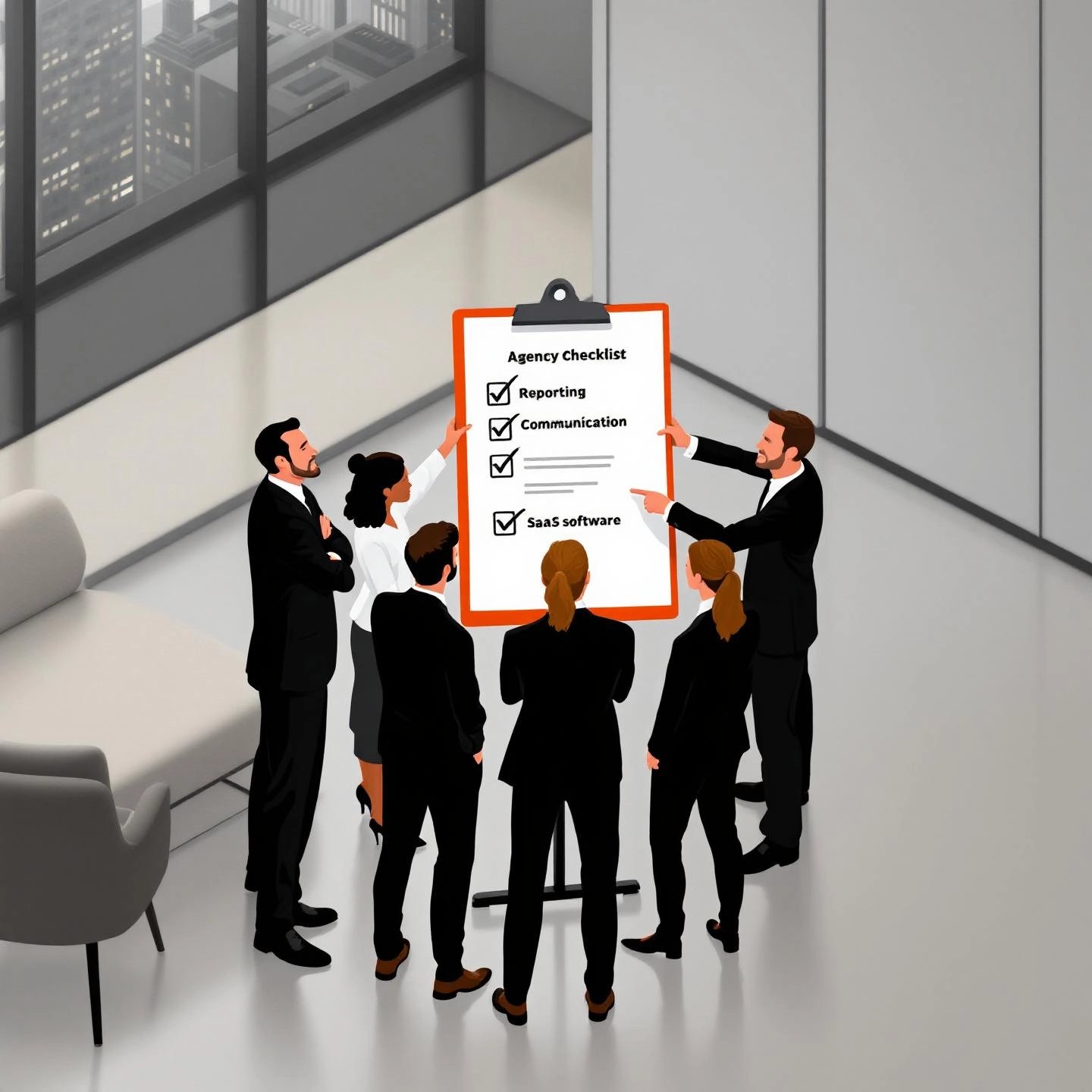Why SaaS Content Marketing Is Essential for Sustainable Growth
Ever wondered why some SaaS brands seem to attract customers effortlessly, while others struggle to stand out? The answer often lies in their approach to content marketing. In today’s crowded SaaS landscape, simply having a great product isn’t enough. You’re competing against countless solutions, all vying for attention, trust, and loyalty. This is where saas content marketing becomes your secret weapon.
The Unique Challenges of SaaS Companies
Running a SaaS business isn’t just about writing code or launching features. Imagine trying to explain a complex, technical product to a buyer who may not even know they need it yet. Sounds complex? That’s the reality for SaaS companies. You face:
- High Customer Acquisition Costs (CAC): The average CAC in SaaS can be significant, sometimes reaching hundreds of dollars per customer. Early-stage SaaS firms, in particular, may spend up to three to five times their annual recurring revenue (ARR) just to win new users. This means every marketing dollar must work harder and smarter.
- Long, Complex Sales Cycles: SaaS sales often involve multiple decision-makers and lengthy evaluation periods. Buyers want to be educated, reassured, and convinced at every step.
- Customer Churn: Unlike one-time purchases, SaaS revenue depends on keeping customers happy and engaged over the long term. If users don’t see ongoing value, they’ll leave for a competitor.
- Explaining Technical Value: Many SaaS products are built on advanced technology that can be difficult for non-technical buyers to grasp. This creates a barrier to adoption and trust.
How Content Marketing Solves These Obstacles
So, how does content marketing help? Think of it as your digital guide, leading prospects from curiosity to conversion—and beyond. A strategic content approach enables you to:
- Drive Qualified Leads: By publishing helpful, SEO-optimized content, you attract prospects who are already searching for solutions like yours. This means more relevant website visitors and warmer leads.
- Boost Conversions: Educational resources, case studies, and product guides help buyers understand your value proposition, making it easier for them to choose your solution.
- Increase Customer Retention: Ongoing content—such as onboarding tutorials, best practices, and success stories—keeps customers engaged, reducing churn and increasing lifetime value.
- Build Trust and Authority: Consistently sharing expert insights and transparent information positions your brand as a trusted advisor, not just another software vendor.
More Than Just Blogging: Building a Strategic Asset
It’s easy to think of content marketing as just writing blog posts, but effective SaaS content marketing is much more. Imagine building a library of resources—blog articles, webinars, whitepapers, product demos, and customer stories—that work together to educate, nurture, and convert your audience at every stage of their journey. Over time, this content becomes a scalable asset that drives sustainable, compounding growth.
In fact, over 70% of B2B marketers credit their company’s success to a strong content plan. For SaaS businesses, content isn’t just a marketing tactic—it’s a critical foundation for growth, customer loyalty, and long-term success.

Defining a Winning B2B SaaS Content Marketing Strategy
Ever feel like you’re publishing content but not seeing real results? You’re not alone. Many SaaS companies create blogs or resources without a clear plan, only to find their efforts scattered and ROI elusive. The difference between random content and a growth-driving engine is a documented, goal-oriented b2b saas content marketing strategy.
Why Strategy Is the Foundation of SaaS Success
Imagine building a house without a blueprint. That’s what content marketing looks like without strategy: disjointed, confusing, and unlikely to stand the test of time. In the SaaS world, where buyers are savvy and competition is fierce, a strategic approach ensures every piece of content supports your business goals and speaks directly to your ideal customers.
According to industry research, 67% of B2B buyers rely on content more than ever during the decision-making process. If your content isn’t tailored to their journey, you risk losing them to competitors who are more strategic.
Core Elements of an Effective B2B SaaS Content Strategy
So, what goes into a strategy that drives measurable results? Let’s break it down into actionable steps:
- Identify Your Ideal Customer Profile (ICP) and Buyer Personas: Who are you creating content for? Define your ICP and develop detailed personas to understand their pain points, goals, and decision-making process. Collaborate with sales and customer success teams to uncover real questions and objections from prospects.
- Conduct Keyword Research and Topic Clustering: Don’t just chase high-volume keywords. Focus on terms with strong business intent—even if they have lower search volume. Group related keywords into clusters around core topics to build authority and improve SEO.
- Map Content to the Marketing Funnel (TOFU, MOFU, BOFU): Not all content serves the same purpose. Structure your plan to address every stage of the buyer’s journey:
- TOFU (Top of Funnel): Educational blogs, industry trends, and guides to build awareness.
- MOFU (Middle of Funnel): Product comparisons, use cases, and webinars to nurture interest.
- BOFU (Bottom of Funnel): Case studies, demos, and solution pages to drive conversions and sales.
- Define Content Pillars and Distribution Channels: Choose 3–5 core themes (content pillars) that align with your product’s value and your audience’s needs. Plan distribution across channels—blog, email, social media, webinars, and partner sites—to maximize reach and engagement.
- Set Clear Objectives and KPIs: What does success look like? Establish specific goals (e.g., increase qualified leads, boost demo signups, improve retention) and measurable KPIs (such as organic traffic, conversion rates, or content-influenced revenue).
From Plan to Execution: Making Your Strategy Work
Once the strategy is set, it’s time to operationalize. Build a content calendar that aligns with product launches, campaigns, and seasonal trends. Regularly audit your existing content to identify gaps and repurpose high-performing assets. Assign clear ownership for each step—from ideation to publication—to keep your team accountable and agile.
With a robust b2b saas content marketing strategy in place, you’ll notice your content not only attracts more qualified leads but also nurtures them through the funnel—turning visitors into loyal customers. Next, let’s look at real-world examples of SaaS companies putting these principles into action and the outcomes they’ve achieved.
Learning from Successful SaaS Content Marketing Examples
Ever wonder what separates SaaS companies that consistently grow from those that struggle to break through? The answer often lies in how they approach content marketing. Let’s explore several saas content marketing examples that have set the bar high—so you can borrow their playbooks for your own growth.
1. HubSpot: Building Authority Through Education
Imagine searching for marketing advice and repeatedly landing on the same trusted source. That’s the power of HubSpot’s content ecosystem. HubSpot didn’t just build a blog—they created a comprehensive educational platform featuring:
- SEO-driven resource hubs: Thousands of blog articles addressing every stage of the buyer’s journey.
- Free certifications and online courses: These not only educate marketers but also build loyalty and product familiarity.
- Industry reports: In-depth research like the "State of Marketing" series, which attracts backlinks and cements authority.
Why did it work? HubSpot focused on teaching the methodology (inbound marketing) that made their product the logical next step. By giving away valuable knowledge, they built trust, captured leads, and nurtured users who were already invested in their approach. The result? Consistent traffic, high engagement, and a brand synonymous with marketing expertise.
2. Notion: Community-Powered Content and Templates
Staring at a blank page is daunting. Notion solved this by launching a community-driven template marketplace, where users share pre-built workspaces for everything from project management to personal productivity. Their strategy included:
- User-generated content: Templates created and shared by the Notion community.
- Influencer partnerships: Collaborations with productivity creators on platforms like TikTok to reach new audiences.
Why did it work? Notion’s templates addressed a core user pain point—getting started quickly. Community contributions scaled content creation, while influencer partnerships expanded reach. Each template not only showcased product capabilities but also inspired new users to try Notion, accelerating adoption and retention.
3. HelloSign: Product-Led SEO and Strategic Content Mapping
When HelloSign set out to drive more signups and organic traffic, they didn’t just churn out generic blog posts. Instead, they:
- Mapped content to the buyer journey: Created targeted resources for every funnel stage—educational blogs for awareness, tactical guides for evaluation, and detailed product comparisons for decision-making.
- Focused on evergreen SEO: Invested in long-form, keyword-optimized content that compounded traffic over time.
- Leveraged case studies: Showcased real customer outcomes, building trust and demonstrating product value.
What were the results? Over 17 months, HelloSign saw organic traffic grow by more than 1,300%, fueling business growth and contributing to their acquisition by Dropbox. Their approach balanced educational value with product relevance—ensuring content attracted, nurtured, and converted high-intent visitors.
Key Takeaways for Your SaaS Content Strategy
- Educate first, sell second: Content that genuinely helps your audience builds trust and authority.
- Leverage community and user stories: Templates, case studies, and user-generated content scale your reach and credibility.
- Map content to every funnel stage: Don’t just focus on traffic—guide prospects from awareness to decision with relevant resources.
- Invest in compounding assets: Evergreen, SEO-driven content continues to deliver value long after it’s published.
By learning from these standout saas content marketing examples, you can craft a strategy that attracts, educates, and converts—setting your SaaS business on a path to sustainable growth. Next, let’s explore how to turn these insights into a repeatable growth engine with the content flywheel approach.

Building Your Content Flywheel for SaaS Growth
Ever feel like your content efforts are a one-way street—publish, promote, repeat—with little compounding impact? Imagine if every piece of content you created not only attracted new leads, but also fueled ongoing engagement and loyalty, turning customers into your most powerful advocates. That’s the promise of the content flywheel—a model that transforms saas content creation into a sustainable, self-reinforcing growth engine.
What Is the Content Flywheel for SaaS?
Unlike the traditional sales funnel, which moves leads from awareness to purchase in a linear fashion, the content flywheel is circular and continuous. Each stage feeds the next, building momentum and compounding results over time. For SaaS companies, this means your marketing doesn’t stop at acquisition—it powers retention, expansion, and advocacy, all through strategic content (source).
The Three Core Stages of the SaaS Content Flywheel
- Attract: This is where your journey begins. You create and distribute SEO-optimized blog posts, in-depth guides, infographics, and videos to draw potential customers to your site. The key is to address real pain points and questions your target audience faces. Effective attraction content is discoverable (think keyword research and topic clusters) and valuable enough to earn attention and trust. Metrics to watch include website traffic, organic search rankings, and time-on-page.
- Engage: Once you’ve captured interest, it’s time to deepen the relationship. Here, you offer webinars, interactive case studies, email courses, and even surveys or quizzes that invite participation. The goal is to nurture leads, answer objections, and showcase your product’s unique value. This stage is also where you collect insights about your audience—what excites them, what holds them back. Engagement content builds familiarity and moves prospects closer to conversion. Track metrics like email open rates, webinar attendance, and content downloads.
- Delight: The journey doesn’t end at the sale. In the delight stage, you focus on delivering an exceptional customer experience through knowledge bases, product tutorials, customer success stories, and community forums. This content helps users unlock more value, reduces churn, and encourages them to share their wins. Delighted customers become your advocates, fueling the next cycle of the flywheel with referrals and testimonials. Key metrics include customer retention rate, net promoter score (NPS), and user-generated content or reviews.
Why the Content Flywheel Works for SaaS
Sounds complex? Here’s why this model is so effective for SaaS:
- Compounding Growth: Each satisfied customer can bring in new leads through advocacy, reducing acquisition costs and amplifying your reach (source).
- Reduced Churn: Engaged and delighted customers are less likely to leave, increasing lifetime value and stabilizing revenue.
- Continuous Optimization: The cyclical nature means you’re always learning—analyzing which content resonates and where users drop off, then refining your approach.
- Alignment Across Teams: The flywheel encourages collaboration between marketing, product, and customer success, ensuring a seamless experience from first touch to loyal advocate.
Tips for Implementing Your SaaS Content Flywheel
- Map your existing content to the flywheel stages—identify gaps and opportunities for new formats or topics.
- Invest in evergreen assets (like in-depth guides or knowledge bases) that continue to deliver value over time.
- Encourage and feature customer contributions—case studies, video testimonials, and community Q&As—to scale advocacy.
- Regularly review metrics at each stage to spot bottlenecks and iterate quickly.
By embracing the content flywheel, SaaS companies can transform content from a cost center into a compounding growth engine. Next, let’s dive into how you can measure the true effectiveness of your efforts by tracking the right metrics at every stage.
Key Metrics to Measure Content Marketing Effectiveness in SaaS
When you invest time and resources into content marketing, how do you know it’s working? Is a spike in website visits enough, or should you dig deeper? If you’ve ever wondered how to measure saas content marketing for real business impact, you’re not alone. Many SaaS teams get caught up in numbers that look good on the surface but don’t actually move the needle. Let’s break down the difference between vanity metrics and actionable, business-driving metrics—so you can focus on what truly matters.
Vanity Metrics vs. Business-Impacting Metrics
Imagine celebrating 10,000 new blog visitors—only to realize hardly any of them signed up or engaged with your product. Sounds familiar? These are vanity metrics: numbers that look impressive but don’t reflect meaningful progress. Examples include pageviews, social followers, or total downloads. While they can signal reach, they often don’t tie directly to revenue or retention (source).
On the other hand, business-impacting metrics—sometimes called actionable metrics—show clear cause and effect. They link your content efforts to real outcomes, like conversions, customer retention, or revenue growth. These are the metrics that help you make data-driven decisions and optimize for sustainable growth.
Which Metrics Matter Most at Each Stage?
To measure content marketing saas effectiveness, track metrics that align with your goals at every stage of the customer journey. Here’s a quick comparison to help you focus on what counts:
| Stage | Vanity Metrics | Business-Impacting Metrics |
|---|---|---|
| Traffic |
|
|
| Engagement |
|
|
| Conversion |
|
|
| Revenue & Retention |
|
|
How to Track and Report on the Right Metrics
Ready to move beyond surface-level stats? Here’s how you can start measuring what truly matters:
- Define clear objectives: Are you aiming to increase qualified leads, boost retention, or drive revenue growth? Match your metrics to your goals.
- Use analytics tools wisely: Platforms like Google Analytics, CRM systems, and content attribution tools help connect the dots between content and outcomes.
- Compare over time: Track metrics monthly or quarterly to spot trends, not just one-off spikes.
- Report actionable insights: Don’t just list numbers—explain what they mean and what actions you’ll take next.
Practical Example: Calculating Content ROI
Let’s say your blog drove 500 demo requests, and 50 of those became paying customers. If you spent $5,000 to produce and promote the content, and those new customers generated $20,000 in profit, your ROI would be:
ROI = [(Profit from content – Content costs) ÷ Content costs] × 100ROI = [($20,000 – $5,000) ÷ $5,000] × 100 = 300%
This approach helps you see which content investments deliver real business value.
By focusing on actionable, business-impacting metrics, you’ll unlock deeper insights into your SaaS content marketing performance—and set yourself up for smarter, more sustainable growth. In the next chapter, we’ll explore how AI tools can help you scale and optimize your content workflow for even greater results.

Leveraging AI-Driven SaaS-Based Content Marketing Software for Scalable Growth
Ever feel like your content calendar is always behind, or that your team spends more time drafting than strategizing? You’re not alone. As SaaS businesses race to publish more, faster, and smarter, ai-driven saas-based content marketing software has emerged as a game-changer. But what does this really mean for your workflow—and how do you strike the right balance between automation and authenticity?
Why AI Is Transforming SaaS Content Operations
Imagine if you could brainstorm dozens of relevant topics in minutes, generate SEO-friendly outlines with a click, and draft high-quality articles at scale—without sacrificing your unique brand voice. That’s the promise of today’s AI-powered tools. These platforms use machine learning and natural language processing (NLP) to analyze data, understand context, and automate repetitive content tasks.
But here’s the catch: AI isn’t here to replace your team—it’s here to augment their capabilities. When used thoughtfully, these tools accelerate production, boost consistency, and free up time for your strategists and subject matter experts to focus on what really matters: creativity, insight, and brand differentiation.
What Can AI-Driven SaaS Content Tools Do?
Let’s break down the key areas where AI can make your content workflow smarter and more efficient:
- Brainstorming Topics: AI tools can analyze trending topics, customer queries, and competitor content to suggest timely, relevant ideas tailored to your audience’s interests.
- Generating Outlines: With a few keywords or a working title, AI can structure a logical, SEO-optimized outline—saving hours of manual planning.
- Drafting Content: Need a first draft fast? AI can produce well-structured blog posts, product descriptions, or email campaigns, letting your team focus on editing and refinement rather than starting from scratch.
- Optimizing for SEO: AI-powered content editors recommend keywords, meta tags, and formatting tweaks to help your content rank higher in search engines. Some tools even analyze top-performing competitor pages for additional insights.
- Repurposing Assets: Turn a long-form article into bite-sized social posts, email snippets, or infographic copy—automatically—maximizing the reach and lifespan of every piece of content.
Platforms like BlogSpark, Jasper, Copy.ai, and SurferSEO each offer unique strengths, from keyword discovery to content scoring. The best results come when you match the tool’s capabilities to your specific workflow bottlenecks.
AI-Assisted vs. AI-Generated: Finding the Right Balance
Sounds tempting to let the machine do it all? Not so fast. While fully AI-generated content is great for speed and volume (think programmatic SEO or templated resources), it risks losing your brand’s unique voice and strategic nuance. That’s why the most successful SaaS teams use a hybrid approach:
- AI-Assisted Content: Human writers lead the process, using AI for research, structure, and editing. This keeps your messaging authentic and aligned to brand goals.
- AI-Generated Content: For repetitive or data-driven content needs, AI drafts the bulk of the copy, but humans review, fact-check, and optimize for clarity and impact.
Ultimately, AI is a powerful ally, not a replacement. The teams that win are those who blend automation with creativity—using data-driven insights to fuel original, high-impact content.
Practical Example: How BlogSpark Accelerates SaaS Content Creation
Imagine planning your next campaign. With BlogSpark, you can:
- Discover high-value keywords and trending topics in your SaaS niche, instantly.
- Auto-generate SEO-focused outlines that map directly to your audience’s search intent.
- Draft posts in your brand’s voice, complete with originality checks for credibility.
- Repurpose blog content into social media snippets or email newsletters with one click.
- Export and publish directly to your CMS, streamlining the entire workflow.
This approach not only speeds up production but also ensures every asset is optimized for both search engines and real readers—freeing your team to focus on strategy, storytelling, and customer engagement.
Tips for SaaS Teams Embracing AI Content Tools
- Start with a single workflow bottleneck—like topic ideation or SEO optimization—and test how AI can help.
- Set clear goals: Are you aiming for more output, higher quality, or faster turnaround?
- Always review and refine AI-generated content to maintain accuracy, brand consistency, and compliance with search engine guidelines.
- Use analytics to track what’s working, and iterate your process as you learn.
By integrating ai-driven saas-based content marketing software into your workflow, you’ll unlock new levels of efficiency and creativity—without losing the strategic human touch that sets your brand apart. Next, let’s explore whether building an in-house team or partnering with a specialist agency is the right move for your SaaS content goals.
Deciding Between an In-house SaaS Content Marketer and a Specialist Agency
When you’re ready to scale your SaaS content marketing, should you hire an in-house saas content marketer or partner with a specialist saas content marketing agency? It’s a question that every growing SaaS business faces—and the answer depends on your goals, resources, and need for flexibility. Let’s break down the key differences so you can make a data-driven decision that fits your unique situation.
What’s Right for Your SaaS: In-house or Agency?
Imagine you’ve just secured new funding or hit a growth milestone. You know content is the engine behind sustainable SaaS growth, but how do you build the right team to fuel it? Here’s what you need to consider:
| Factor | In-house SaaS Content Marketer | Specialist SaaS Content Marketing Agency |
|---|---|---|
| Cost |
|
|
| Expertise |
|
|
| Speed to Execute |
|
|
| Scalability |
|
|
| Access to Tools & Technology |
|
|
Pros and Cons: A Closer Look
In-house Team
- Pros: Full control over brand messaging, deep product knowledge, quick feedback loops
- Cons: Higher fixed costs, limited skill diversity, slower to scale for new initiatives
Specialist Agency
- Pros: Wide-ranging expertise, flexible and scalable, often more affordable for specific projects or rapid growth
- Cons: Initial learning curve on brand voice, requires strong communication for alignment
Which Option Fits Your SaaS Growth Stage?
- Early-stage/startups: Agencies provide instant access to specialized skills and tools, allowing you to launch campaigns and test channels without hiring a full team.
- Growth-stage/scale-ups: A hybrid approach—core in-house marketers supported by agency partners—offers the best of both worlds: brand consistency and scalable execution (source).
- Enterprise: Larger SaaS firms may build robust in-house teams but still rely on agencies for specialized campaigns, market expansions, or overflow work.
Making Your Decision
Ask yourself:
- Do you need rapid results and access to a wide range of content marketing skills?
- Is direct control and deep brand immersion a top priority?
- What’s your budget for hiring, training, and tools?
- How quickly must you scale or pivot your content strategy?
There’s no one-size-fits-all answer. Many successful SaaS companies blend both approaches—building a small, agile in-house team for core strategy and product knowledge, while partnering with agencies for execution, scale, and specialized expertise. This hybrid model delivers flexibility, efficiency, and the ability to respond to market changes quickly.
As you weigh your options, remember: the right structure is the one that aligns with your growth goals, resources, and the complexity of your SaaS content marketing needs. Next, we’ll share a practical checklist to help you evaluate and select the best agency partner for your business.

What to Look for in a B2B SaaS Content Marketing Agency
Choosing the right b2b saas content marketing agency can feel overwhelming. With dozens of options promising results, how do you separate the agencies that truly deliver from those that just talk a good game? Imagine investing months into a partnership—only to realize the agency doesn’t understand your industry, can’t show real results, or lacks a clear process. Let’s break down a practical checklist to help you avoid these pitfalls and select a partner who can drive sustainable SaaS growth.
Why a Specialized SaaS Agency Matters
SaaS content marketing isn’t just about writing blogs—it’s about translating complex software value into clear, compelling stories that nurture leads and retain customers. The right agency brings deep SaaS expertise, understands the long sales cycles, and knows how to map content to every stage of the buyer’s journey (source).
Essential Criteria for Evaluating a B2B SaaS Content Marketing Agency
| Checklist Item | What to Ask/Look For |
|---|---|
| Proven B2B SaaS Experience |
|
| Portfolio of Measurable Results |
|
| Deep Understanding of the Marketing Funnel |
|
| Clear Process for Strategy & Distribution |
|
| Transparent Reporting & Communication |
|
| Alignment with Your Brand & Goals |
|
| Strong Client Relationships & Retention |
|
Red Flags and Common Pitfalls to Avoid
- Lack of SaaS-specific references: If they can’t show experience with SaaS or B2B tech, their learning curve may slow you down.
- Vague process or reporting: Beware of agencies that can’t clearly explain their workflow or hesitate to share real performance data.
- Poor communication: If they don’t respond promptly or struggle to incorporate feedback, collaboration will suffer.
- Cookie-cutter strategies: Your SaaS business is unique—avoid agencies that recycle the same approach for every client.
How to Use This Checklist in Your Search
- Start with a shortlist of agencies that specialize in B2B SaaS.
- Request case studies, sample reports, and a detailed explanation of their process.
- Ask for a kickoff call to assess communication style and cultural fit.
- Trust your instincts: If something feels off during the vetting process, keep looking.
By following this checklist, you’ll be equipped to select a b2b saas content marketing agency that not only understands your industry but also delivers measurable results. Next, we’ll outline what “full-service” really means in SaaS content marketing—and which services your chosen agency should provide for maximum impact.
Essential Services a Top SaaS Content Firm Should Offer
When you hear "full-service" in the world of saas content marketing services, what does it actually mean? Is it just about publishing a few blog posts, or does it go much deeper? Imagine investing in an agency partnership, only to find gaps in strategy, execution, or reporting. To avoid this, it’s crucial to know exactly which services a competent SaaS content marketing partner should provide—and how these offerings work together to drive sustainable growth for your business.
What Does "Full-Service" Mean for SaaS Content Marketing?
Full-service goes far beyond content creation alone. It’s about delivering a complete, end-to-end solution that covers every phase of your content marketing journey—from strategy and planning to execution, promotion, and measurement. The best SaaS agencies take ownership of results, acting as an extension of your team and aligning every activity with your business goals.
Core Offerings You Should Expect from a Leading Agency
So, what should you look for when evaluating saas content marketing services? Here’s a breakdown of the essential components that set top-tier agencies apart:
- Strategy Development
- In-depth discovery to understand your ICP, buyer personas, and competitive landscape
- Goal setting and KPI alignment to ensure content efforts map to real business outcomes
- Content calendar creation tied to product launches, campaigns, and seasonality
- SEO Keyword Research & Topic Clustering
- Comprehensive keyword research focused on intent and business relevance—not just search volume
- Topic clustering to build topical authority and improve organic rankings
- Competitive gap analysis to spot opportunities others miss
- Content Creation (Blog, Articles, and More)
- Expert-led writing for blogs, guides, landing pages, and product resources
- Editorial planning and review to ensure quality, consistency, and brand voice
- Incorporation of subject matter expertise and industry insights
- Case Study & Whitepaper Development
- Research and interviews with real customers to showcase product value
- Creation of compelling case studies, whitepapers, and eBooks to support sales enablement and thought leadership
- Content Distribution & Promotion
- Strategic promotion via organic channels (SEO, email, social media)
- Outreach and link building to amplify reach and authority
- Paid promotion and retargeting as needed for key assets
- Performance Analytics & Reporting
- Regular, transparent reporting on business-relevant KPIs (traffic, leads, MRR, conversions)
- Impact analysis to demonstrate ROI and guide ongoing strategy
- Continuous optimization based on data-driven insights
Setting a High Standard: What Separates the Best from the Rest?
Not all agencies deliver the same level of service. Top-performing SaaS content firms are distinguished by:
- Proven SaaS Experience: Deep understanding of SaaS business models, long sales cycles, and technical audiences.
- Alignment with Revenue Goals: Focus on business-impacting metrics like qualified signups, SQLs, and MRR—not just vanity metrics.
- Collaborative Approach: Seamless integration with your in-house team for messaging, brand voice, and feedback.
- Flexible, Scalable Solutions: Ability to adapt to your growth stage, whether you need comprehensive strategy or targeted support for specific campaigns.
When you partner with an agency that truly offers full-service saas content marketing services, you gain a strategic ally dedicated to driving measurable growth. As you evaluate potential partners, use this checklist to ensure you’re setting your business up for long-term content success—then continue refining your approach as your SaaS evolves and scales.
Conclusion
Ever feel like SaaS content marketing is a moving target—one that requires both big-picture strategy and day-to-day execution? You’re not alone. As you’ve seen throughout this guide, the path to sustainable SaaS growth is paved with more than just blog posts or quick wins. It’s about building a system that attracts, engages, and retains the right customers—all while adapting to a fast-changing digital landscape.
Key Takeaways for SaaS Content Success
- Strategic Planning Is Non-Negotiable: Without a clear, documented strategy, your content efforts risk becoming scattered and ineffective. Define your ideal customer, map content to every stage of the funnel, and set measurable goals that directly support your business objectives (reference).
- Measurement Drives Continuous Improvement: Don’t settle for vanity metrics. Focus on actionable KPIs—like qualified leads, trial-to-paid conversions, and retention rates—that reveal what’s truly moving the needle. Use these insights to refine your strategy and double down on what works.
- Expert-Led Execution Multiplies Results: Whether you build an in-house team, partner with a specialist agency, or leverage a hybrid model, ensure you have access to deep SaaS expertise. The right partners will help you translate complex software value into compelling stories that drive real business outcomes.
- AI Tools Unlock Scale and Efficiency: Modern solutions—like an ai blog post generator for saas—can streamline your workflow, speed up production, and maintain consistency as you grow. When used alongside human creativity and strategic oversight, AI helps you publish more high-quality, SEO-optimized content without sacrificing your unique brand voice.
Next Steps: Evaluate and Evolve Your SaaS Content Approach
- Audit your current content strategy: Are you addressing every stage of the customer journey? Where are the gaps?
- Review your metrics: Which pieces of content are driving signups, conversions, or retention—and which ones aren’t?
- Assess your team’s capacity: Do you have the skills and resources to execute at scale, or would a specialist agency or AI-powered tool close the gap?
- Explore modern solutions: Tools like BlogSpark can help you brainstorm topics, generate drafts, and optimize for SEO—freeing up your team for higher-level strategy and creative work.
"In SaaS, content is not just a marketing channel—it’s a growth engine. The companies that win are those who invest in strategy, measure what matters, and embrace the right mix of human expertise and smart technology."
Ready to accelerate your SaaS growth? Start by evaluating your current approach, then consider how modern tools and expert partners can help you scale smarter, not harder. By combining strategic planning, data-driven measurement, and the efficiency of AI, you can turn your content marketing into a true competitive advantage—and unlock the next level of sustainable growth.
Frequently Asked Questions about SaaS Content Marketing
1. What is SaaS content marketing and why is it important?
SaaS content marketing is a strategic approach to creating and distributing valuable content that attracts, educates, and converts potential customers for software-as-a-service businesses. It's crucial because it helps SaaS companies reduce customer acquisition costs, improve retention, and build long-term brand authority in a competitive market.
2. How do I develop an effective B2B SaaS content marketing strategy?
Start by defining your ideal customer profile and buyer personas. Conduct keyword research, map content to each funnel stage, establish core content pillars, and set clear KPIs. Regularly audit and optimize your plan to ensure your content aligns with business goals and delivers measurable results.
3. What are some successful examples of SaaS content marketing?
Successful SaaS brands like HubSpot, Notion, and HelloSign leverage educational blogs, community-driven resources, and SEO-focused content mapping. They focus on teaching, nurturing leads, and showcasing real user outcomes to drive consistent growth and engagement.
4. How can AI-driven tools like BlogSpark improve SaaS content marketing?
AI-powered tools such as BlogSpark streamline content creation by automating topic discovery, SEO-focused outlining, and draft generation. They help teams scale output, maintain brand consistency, and free up time for strategic and creative work, making SaaS content marketing more efficient.
5. Should I hire an in-house content marketer or work with a SaaS content marketing agency?
The right choice depends on your budget, scale, and expertise needs. In-house teams offer deep product knowledge and brand control, while agencies provide scalable expertise, faster execution, and access to advanced tools. Many SaaS companies combine both for maximum flexibility and results.




